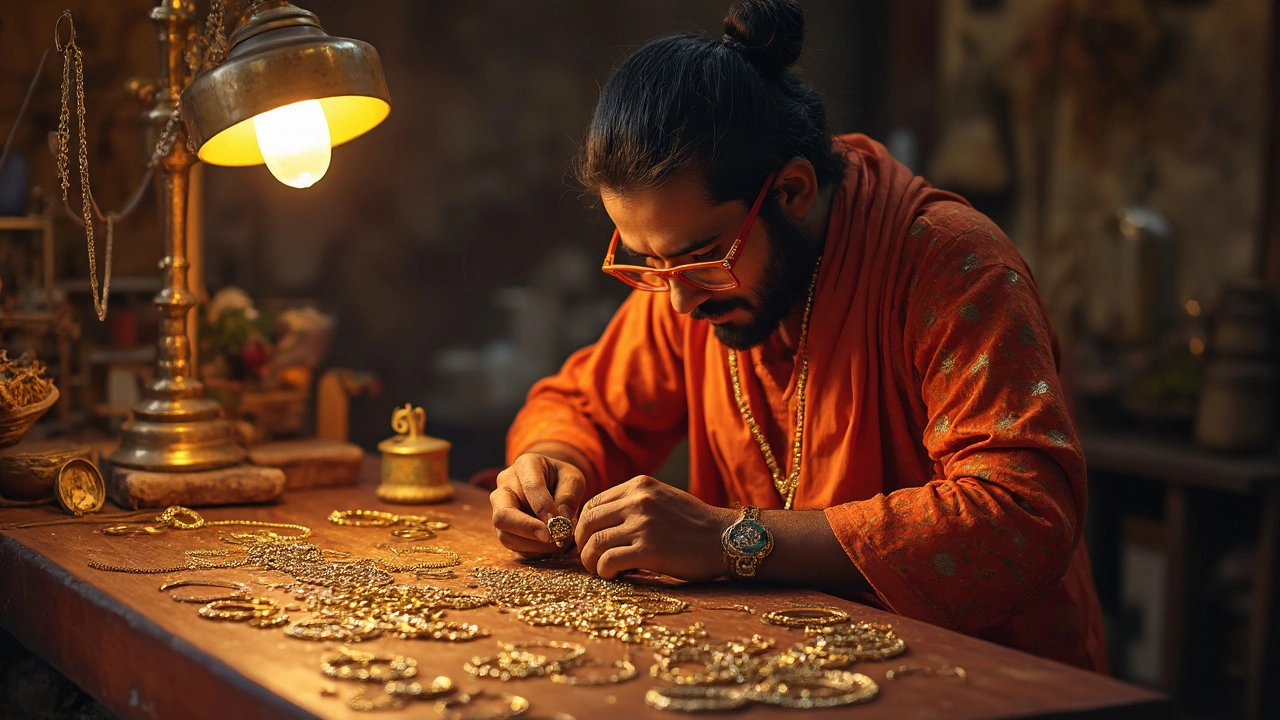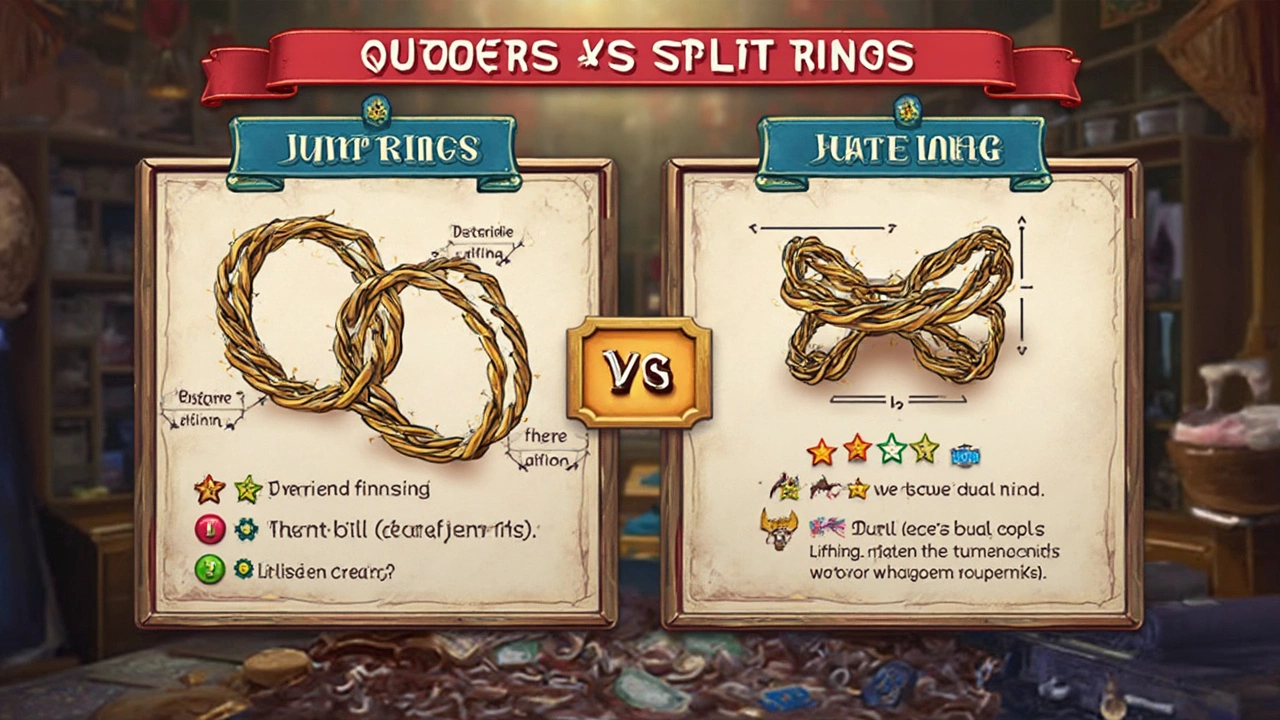
Jewelry making can be tons of fun, but it also comes with its fair share of intricacies. Take jump rings and split rings, for instance—two tiny yet crucial components of your toolkit. You might think they're identical at a glance, but oh boy, they play very different roles in your designs.
Jump rings are like the unsung heroes of the accessory world. They're basically small wire loops, crucial for connecting findings like clasps, pendants, and other parts. The cool part is they come in different sizes and materials, so you can personalize your designs just the way you want them. But there's a trick! Once you open them, they stay open if not closed properly, which makes using the right tool essential.
Understanding Jump Rings
Jump rings are essential players in the world of jewelry making kits, often used to connect chains, charms, and clasps together in your creations. They're made by coiling a wire into a circle, then cutting it at a specific point to create an opening. This little gap allows you to link pieces together.
These rings come in various sizes, measured usually in millimeters, and they can be crafted from different materials like stainless steel, silver, or gold. While the material is often chosen based on the design's overall look, stainless steel is popular for its durability and strength, especially in pieces expected to undergo regular wear and tear.
How to Open and Close Jump Rings
The trickiest part for beginners is knowing how to handle them. To open a jump ring, it's best to use two pairs of pliers—one in each hand. Gently twist the ring open by moving one hand towards you while moving the other away. Avoid pulling it wide apart, which can distort the shape.
When closing it, just reverse the process, ensuring the ends meet perfectly to prevent any weak spots. Mastering this technique helps ensure your jewelry pieces are secure and professional looking.
Choosing the Right Size
The selection of the correct size and thickness of a jump ring can affect both the aesthetics and durability of your design. Thicker rings are stronger but may look bulky with daintier pieces. Sizes like 4mm to 7mm in diameter are quite common for various jewelry projects.
Basic Uses in Jewelry
- Connecting earring hooks to pendants
- Attaching clasps to end chains
- Suspending charms in bracelets
Each type of use can subtly affect the look and movement of the jewelry, making it crucial to choose wisely based on the project.
Exploring Split Rings
Alright, so split rings are like the cooler cousins of jump rings. If you’re familiar with the key rings you use for your house keys, you're basically looking at a split ring. The core idea is they have that double loop, making them super secure and less likely to pull apart.
This added strength is what makes them a favorite in jewelry making kits, particularly when pieces need to hold up under a bit of wear and tear. Unlike jump rings, which you have to bend open, you twist the split ring just like you would a key ring. It might be a bit fiddly, especially with small ones—so patience and a pair of split ring pliers can be your best friends here.
On the use of split rings in jewelry crafting, Kate Smith, a renowned jewelry designer, says, "Split rings are indispensable for securing heavier charms and pendants—you get that added peace of mind knowing everything stays put."
Let’s be real, though. Split rings aren’t exactly the easiest to work with, especially if you’re trying to link delicate pieces. They can sometimes bend if you're not careful. So, reserving them for stronger links is your best bet.
Advantages of Split Rings
- Extra security due to the double-loop design.
- Perfect for heavier or chunkier jewelry items.
- Less prone to unclasp accidentally.
For those just diving into jewelry making, it might be a good idea to keep a mix of jump rings and split rings in your inventory. That way, you’re all set for whatever project comes your way. Happy crafting!

Comparative Analysis
When diving into the details of jump rings and split rings, understanding their unique characteristics can shape up the outcome of your jewelry piece. Despite their tiny size, each plays a distinct and crucial role in your jewelry designs.
Structure and Mechanics
Jump rings are simply circular loops of wire that have just one cut. This means you have to twist them open using special pliers, making them easy to manipulate as needed. They're great for quick attachments, but if you're not careful when closing them, they can leave a gap that makes things prone to falling out.
Split rings, however, are more like tiny key rings. They feature an overlapping coil with two complete loops, offering extra security for the components attached. This makes them perfect for pieces that demand durability and a firmer connection, like heavy charms or bag attachments.
Usage in Jewelry Designs
For delicate earrings or necklaces, jump rings are often preferred for their subtle profile. On the other hand, for designs requiring more strength — like a chunky bracelet or a dangling charm — split rings are generally the better choice. They won't open unexpectedly, adding peace of mind.
Strength and Versatility
When you're considering strength, split rings outshine jump rings, no doubt. They keep things more secure due to their design complexity. However, the simplicity of jump rings allows for fast changes in designs - say hello to creativity!
| Criteria | Jump Rings | Split Rings |
|---|---|---|
| Security | Average | High |
| Ease of Use | High | Moderate |
| Best For | Lightweight, quick fixes | Heavy-duty, permanent |
Ultimately, the choice between jump rings and split rings boils down to your specific project needs, combining both will offer flexibility and professionalism to your jewelry making kits.
Practical Tips for Jewellers
Getting your jewelry game strong isn't just about picking pretty beads or shiny chains. Jewelry making kits often include jump rings and split rings, and knowing how to use them can make or break your pieces.
Choosing the Right Ring
The choice between a jump ring and a split ring primarily hinges on the item's function. For pieces that require lots of movement and durability, like charms on a bracelet, split rings are your go-to because they offer added security. Ever seen a keyring? That's a split ring in action.
Tools You Need
Using the right tools is half the battle. For jump rings, invest in a pair of flat-nosed pliers. The trick is to open them by twisting sideways, not pulling apart, for a clean closure. For split rings, a split ring plier is a lifesaver, allowing you to separate the rings easily without struggling.
Size Matters
When choosing jump rings, size can influence both the look and strength of your design. Thicker gauges provide more strength, but can be harder to open. On the flip side, thinner rings might blend better visually but could sacrifice durability.
Keep it Organized
Storing your rings properly is key. Use small containers or bead storage systems to separate different sizes and types. There's nothing more vexing than searching for that one perfect ring when all your supplies are mixed together.
| Ring Type | Best For |
|---|---|
| Jump Ring | Pendant attachments, lightweight charms |
| Split Ring | Heavy-duty pieces, keychains |
Get creative! By understanding when and how to utilize these jewelry supplies, you can take your projects to a whole new level. And don't forget to experiment—a little trial and error can go a long way in honing your craft.


